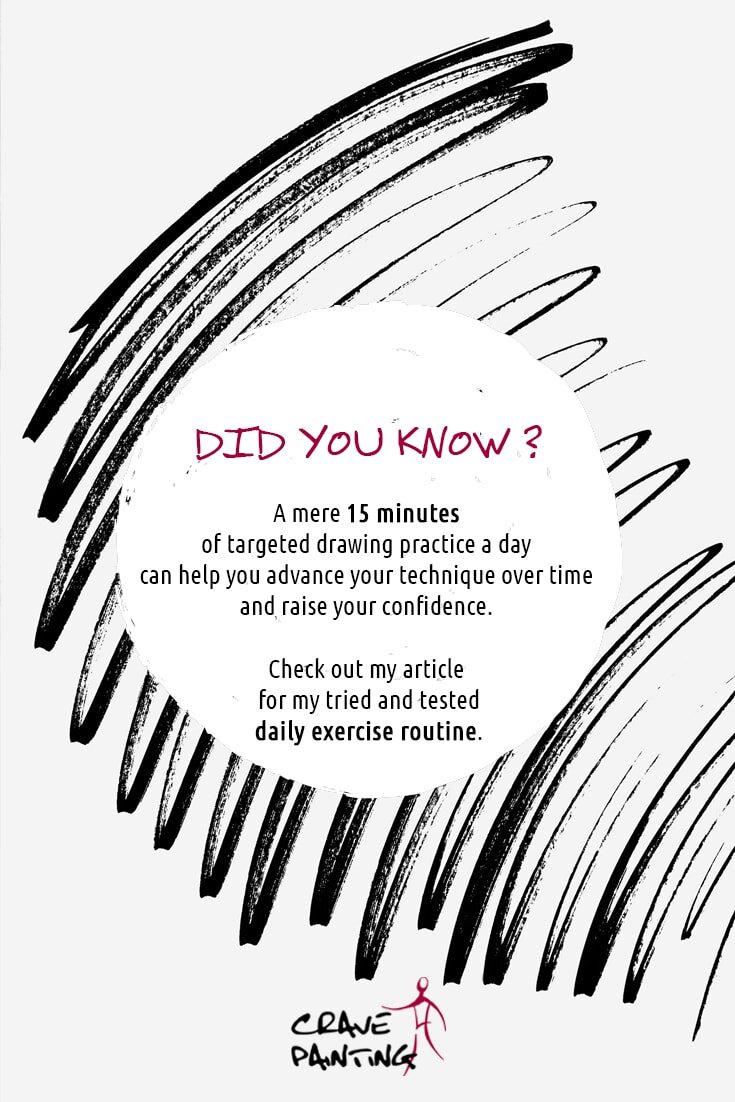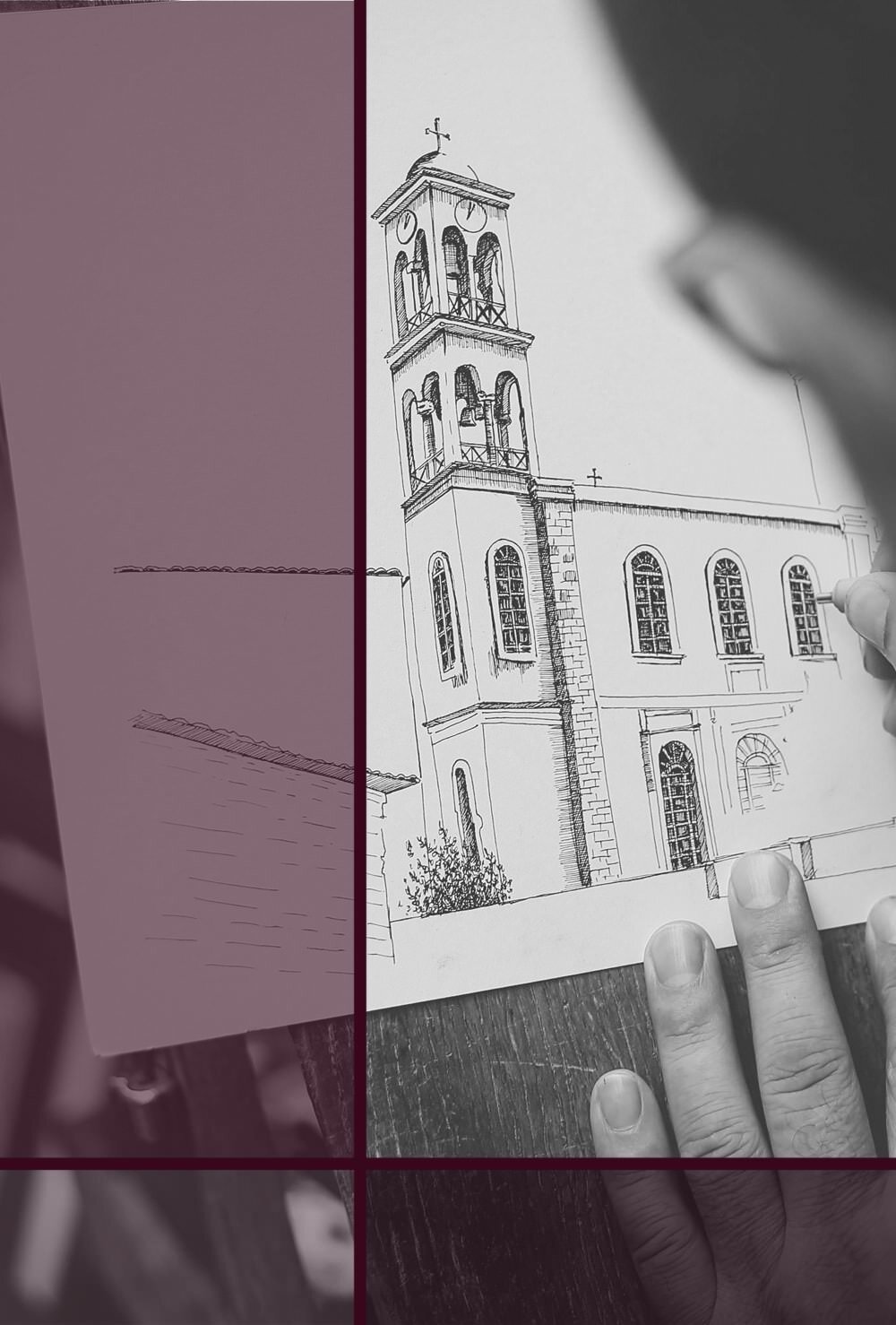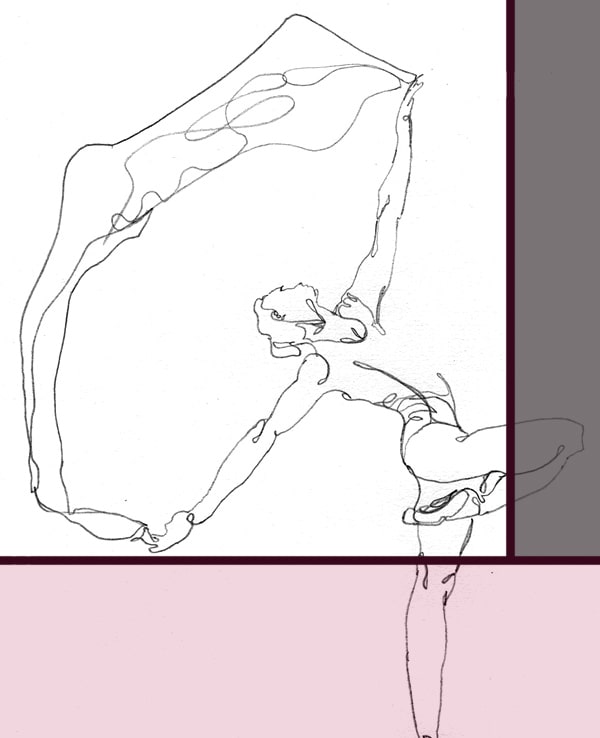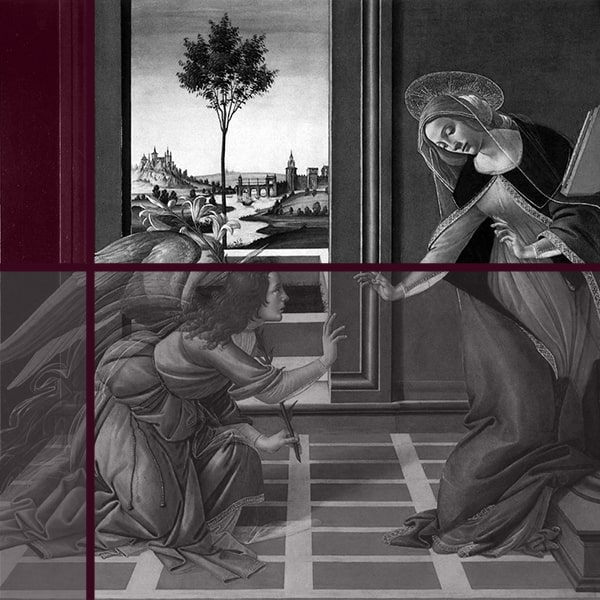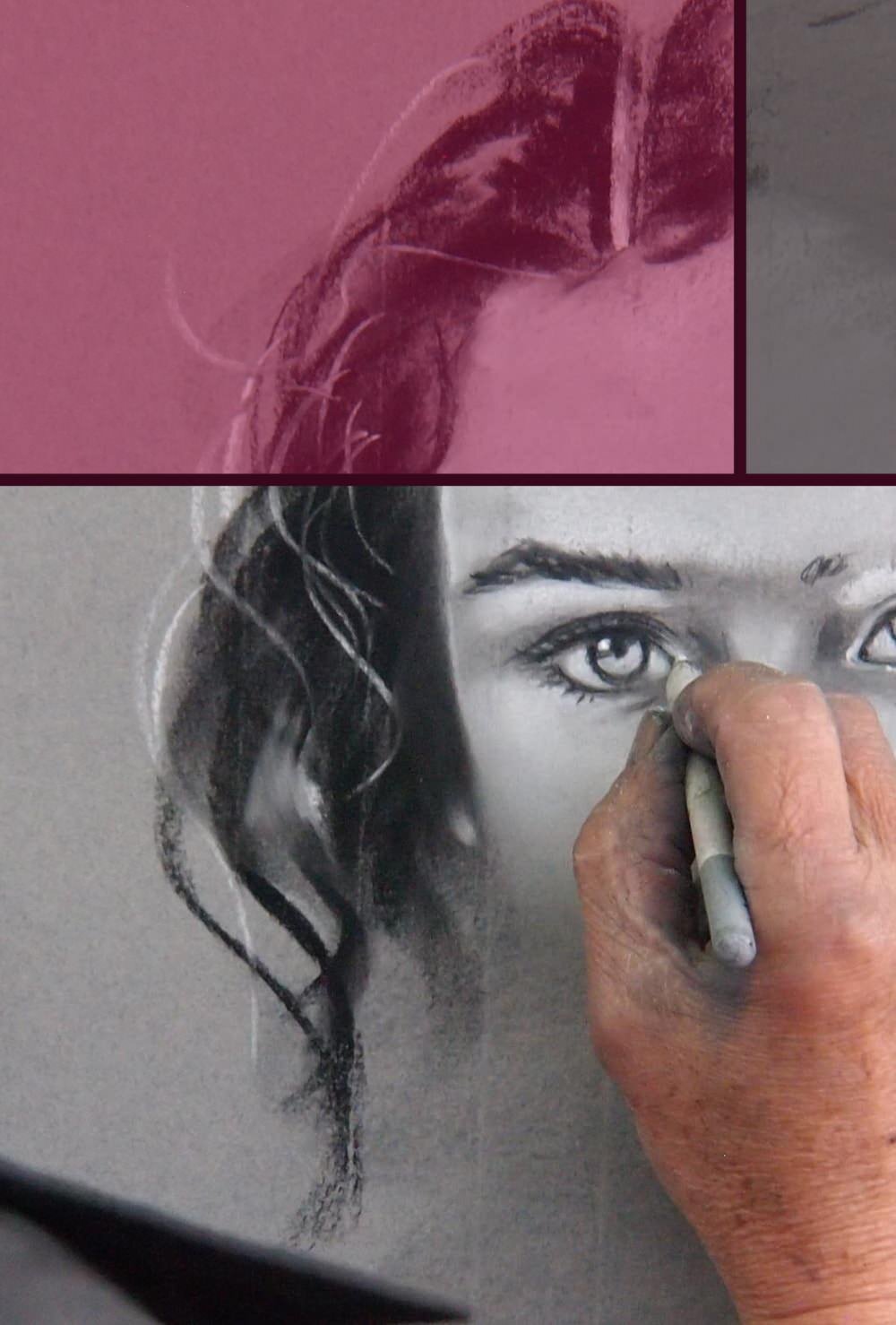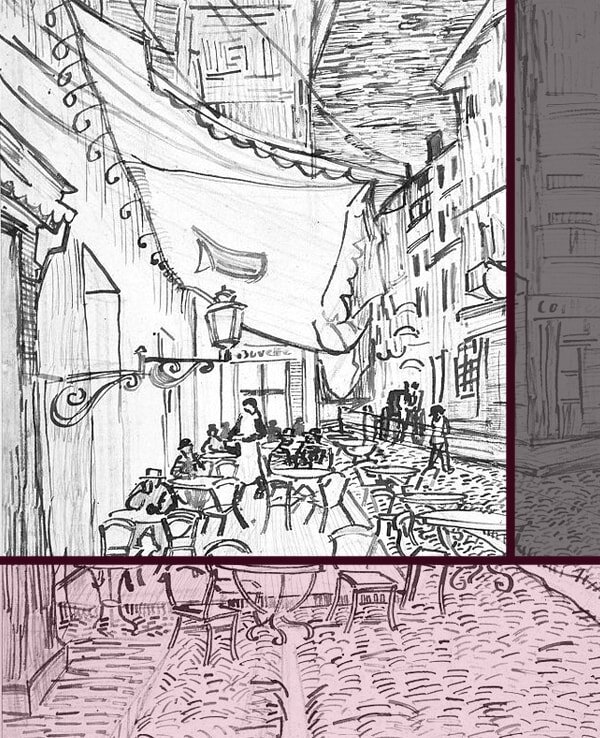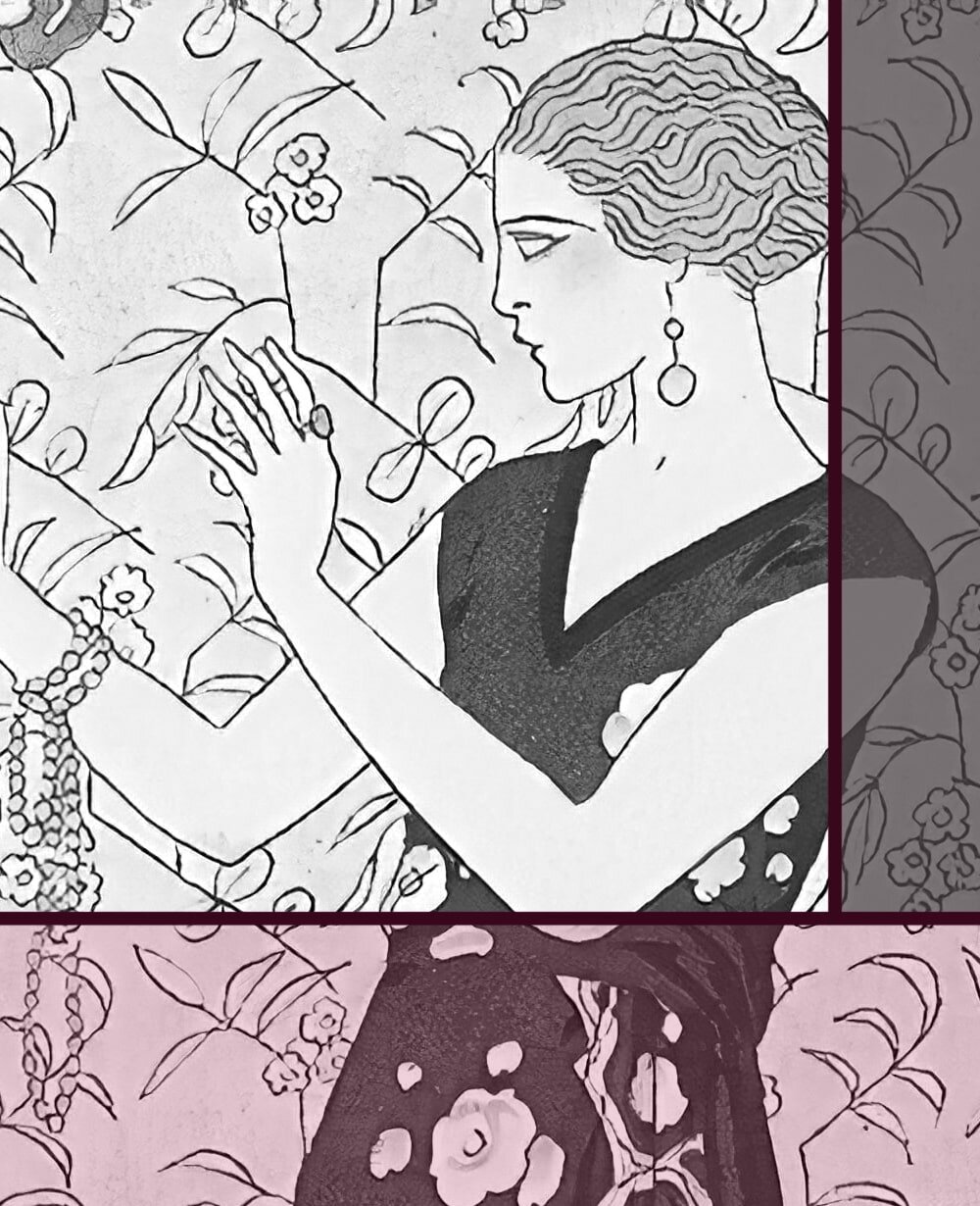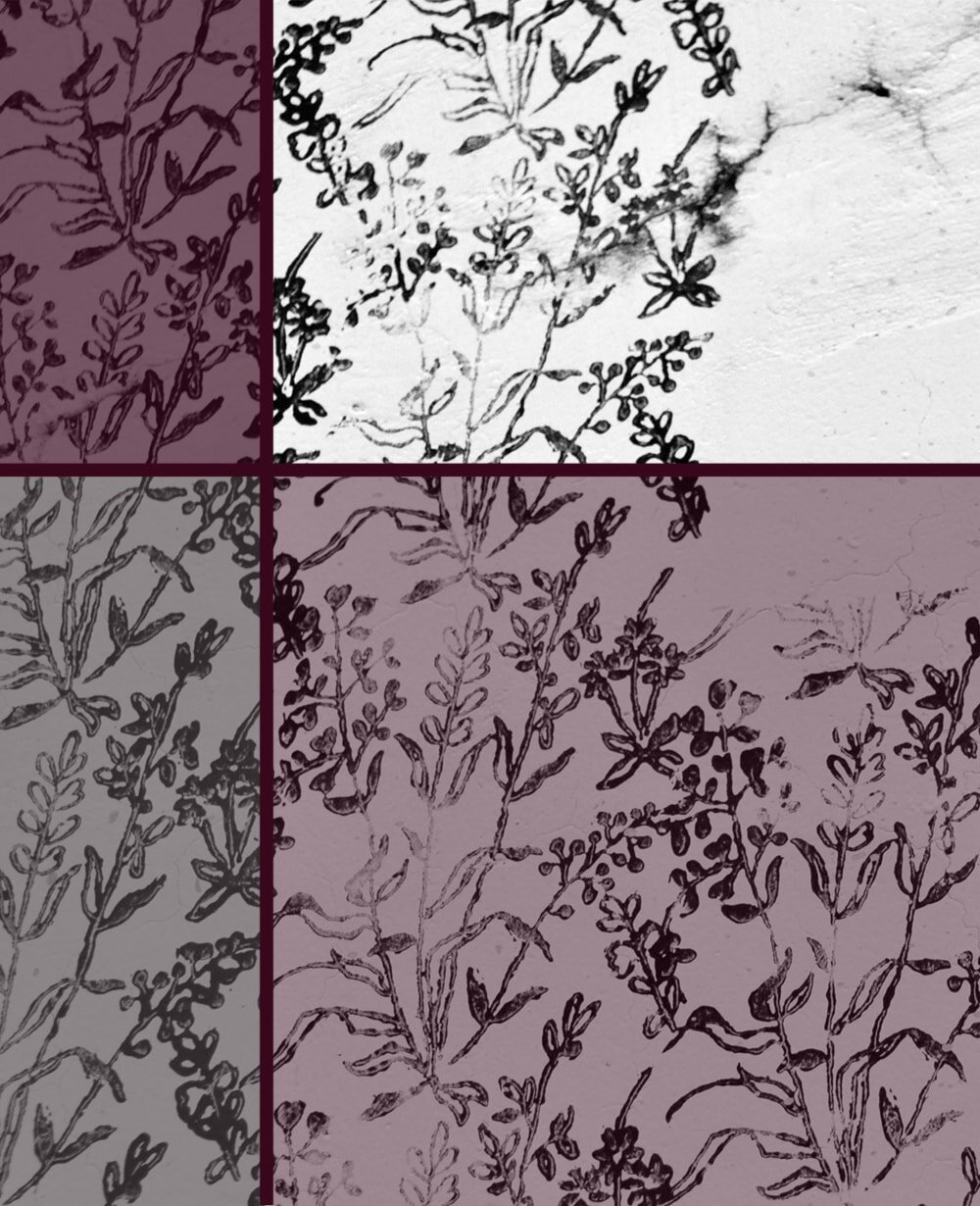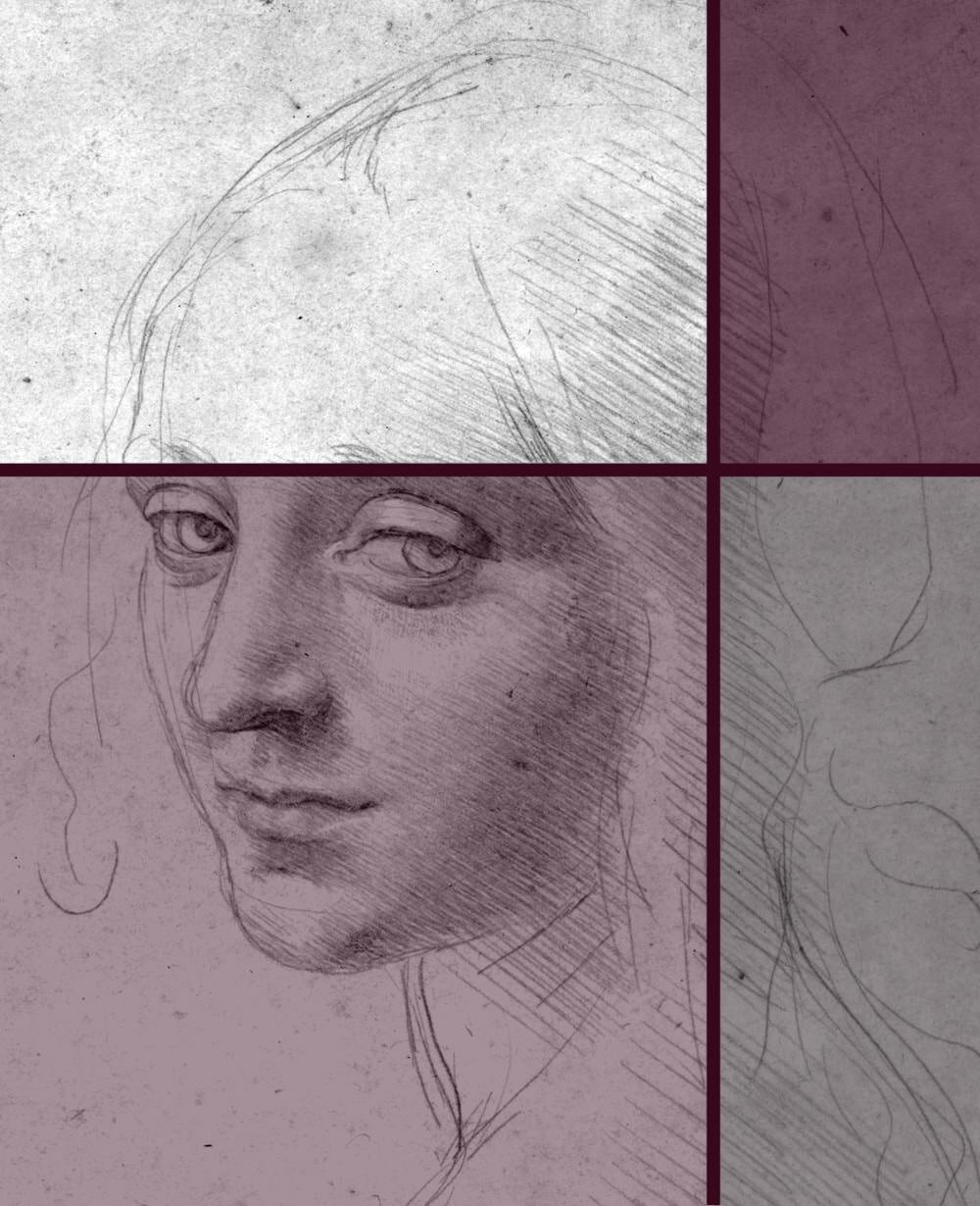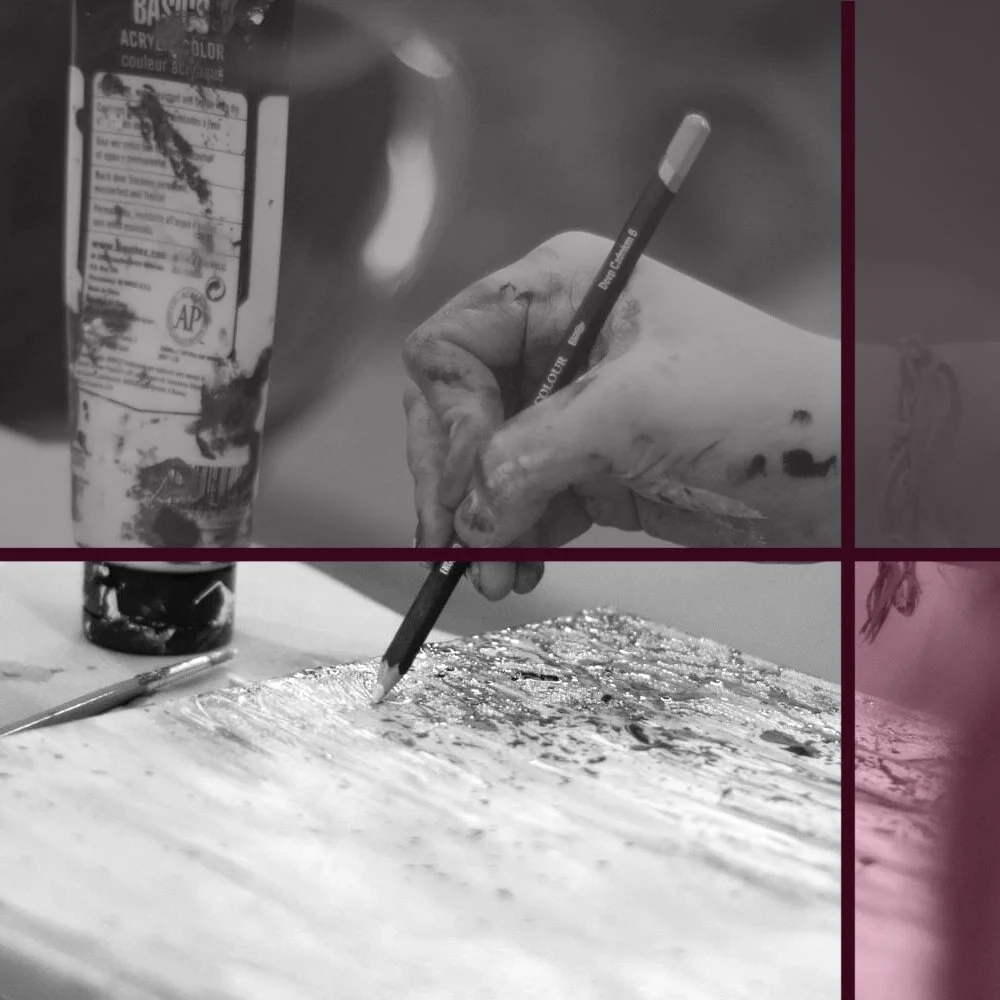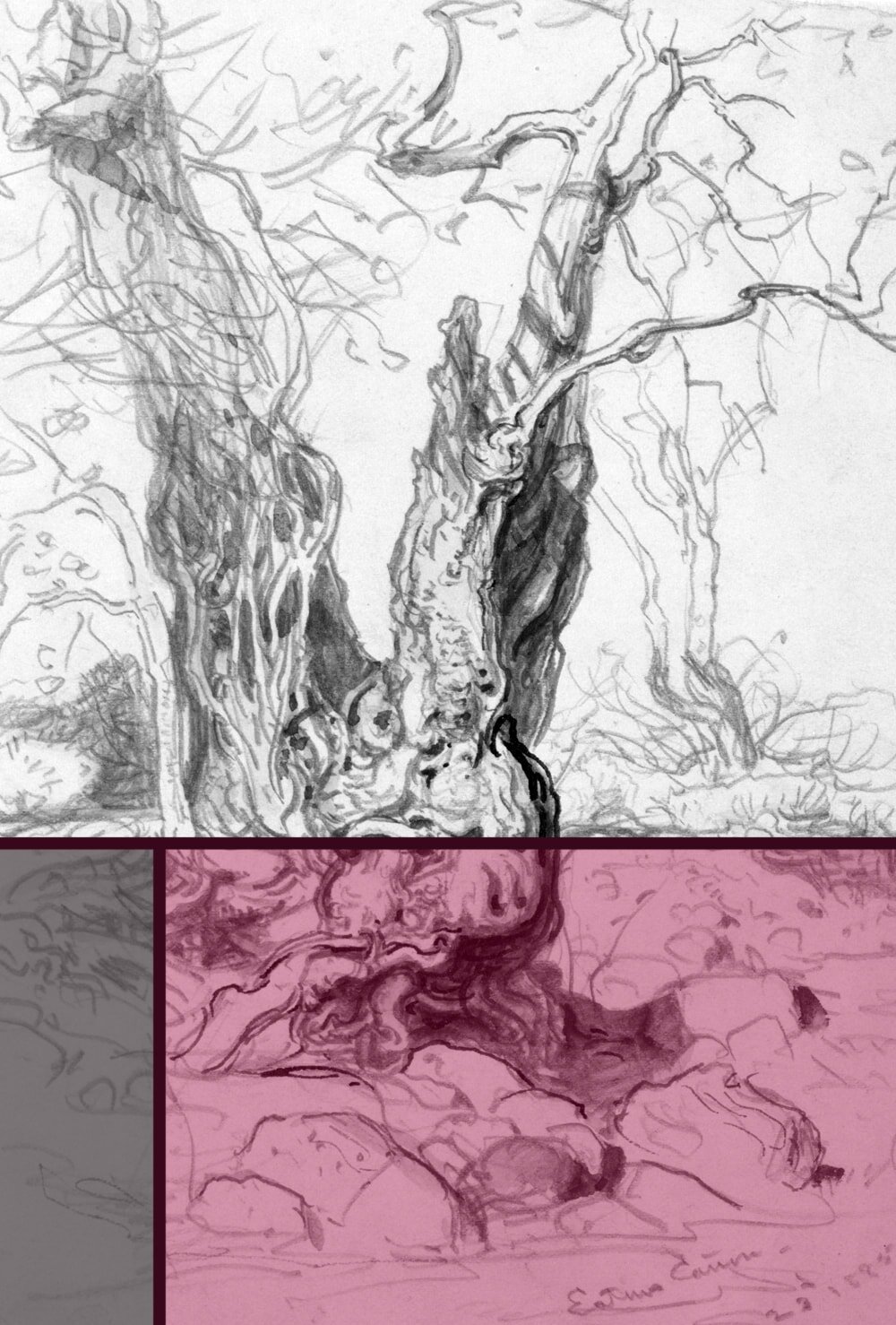The 15-Minutes-a-Day Drawing Exercise Routine (so easy but so effective!)
Improving your drawing skills doesn't require hours and hours of filling sketchbook pages.
In fact, a mere 15 minutes of targeted practice a day can help you advance your technique over time and raise your confidence. And it’ll keep you in shape when you’re just too busy for more.
This list can be an additional exercise to your usual sketching habit, perhaps used as a warm-up. Or it can be the only practice you get for a while, if you don’t have time for anything more elaborate.
If you practice these exercises every day, you’ll notice that you’ll get faster, more accurate and most importantly, more secure in your approaches.
You’ll have more control over your hands, your eyes and your drawing tools and that’ll help you a lot in your more elaborate drawing sessions.
You can find a free one-page summary of this article to print out at home on my Buy Me a Coffee page.
The dreaded 30%
It’s a common misconception that you should enjoy your hobby at all times. But anything worth having (or learning, in this case) requires you to put in a little bit of effort in order to gain the skills required to improve at it. And effort can take, well, effort.
I like to think of it in 70/30 terms (yes, much like the 70/30 composition rule, if that’ll help you remember). Your hobby should bring you at least 70% of pure joy. The other 30% are negotiable.
Any hobby should be at least 70% pure joy. That leaves 30% for the part that feels a bit more like work.
These 30% might include doing some “boring” drills of repeating shapes, so that you can learn to draw your circles actually round and your lines properly straight.
Or it could mean sketching for a few minutes when you’re super busy or not in the mood, just so your hands and eyes don’t forget how to do it.
Don’t worry, the 70% of glee will always make up for the 30% of gloom.
Repetition is the mother of skill
Guitar players need to practice their chords, dancers need to repeat their turns. And drawing artists, professional and hobbyist alike, need to practice their strokes and shapes.
There are a few super simple exercises you should repeat over and over until they become muscle memory and second nature. And then keep repeating them, so it stays that way.
Muscle memory is a miraculously helpful thing to have, even in the arts. But it takes many, many repetitions to build up.
This includes common strokes, like hatching or scribbling, and certain shapes you are likely to need regularly in your sketches. You wouldn’t believe how many ellipses you come across during your day, or how long it can take to actually master that shape.
You can even split these exercises up and do two minutes here and there. Waiting for the kettle to boil or the ad break during your favourite TV show are excellent situations in which you can take out that sketchbook and get your 15-minutes of exercise done for the day.
Stay in shape when you’re busy
Even with the best intentions we don't always have the time or energy for an elaborate drawing session. Sometimes we come home from work late and tired. Or we're simply not in the mood for anything complicated or difficult.
But, just like sports, drawing is a hobby that needs regular practice to maintain your current level of skill and improve. A couple of weeks pause will always put you back.
15 minutes of this routine while the pasta is boiling and you've done more (and more effective), than many other hobby artists out there.
Special tip: You can either guess the time, use an app on your phone or get a set of these adorable mini sand timers to help you keep track.
The Exercises
Minutes 1-2: First stroke of the day
While there are countless different drawing styles and techniques, there actually is a certain number of standard strokes that should be part of every drawing artist’s repertoire.
This includes your hatches, of course, and your stipples, scribbles and chicken scratches.
The most common drawing strokes, from top left to bottom right: hatching, cross-hatching, sidestrokes, stippling, scribbling, curved hatching, rough shading, contouring.
I like to compare practising your strokes with repeating vocabulary. If you are learning a new language you usually start with certain common words with which you can then build simple sentences.
It's the exact same thing with strokes. They are an artist’s vocabulary and what makes up your drawings. Practice them, regularly, repeatedly, and they’ll become second nature.
The goal is to be able to use them naturally, automatically when you draw, without having to stop and think. Have them ingrained in your mind and muscles. And for that you need to practice them, over and over.
Strokes are an artist’s vocabulary and as important for a fluent drawing as words are for a fluent conversation.
Each day, start by choosing one stroke to work with, then draw as much of them as you can fit in the two minutes you’re practicing.
But there’s a trick: The same kind of stroke can be used in a lot of different ways. That’s why this exercise is so super beneficial for your art.
Example of one of several variations of scribbles.
While you are drawing, think of ways to vary the stroke. You might make it big or small, spaced close together or far apart, change the direction or how hard you press.
You could have it crisp or use the side of your pencil for a blurry effect. Make the strokes neat and accurate or fast and undefined.
Minutes 3-4: Second stroke of the day
And because strokes are so so important, we’re going to spend another two minutes on them. Pick a second type of stroke and repeat the exercise above. Really concentrate on it in the time you have, vary it and play with it. Find out what it can do, and what you can do with it.
Example of one of several variations of hatching.
Trust me on this, even if you think you’ll never use a particular stroke in your work, if you’ve really mastered it it will show up in there automatically one day. And a variety of strokes can make your work so much more interesting.
I’ve never liked stippling before I started these exercises, mainly because I only thought of it as drawings made entirely of this one technique. But I practised it anyway and now I use the stroke in almost every sketch to give certain areas more texture and interest.
Even strokes that you think you’ll never use can become a new staple and enrich your sketches immensely.
Tomorrow you can then pick two different strokes and when you’ve gone through them all start again from the beginning, just like you’d do with vocabulary cards.
Minute 5: Combine the strokes
Now that you’ve freshly practised two different strokes and how to vary them to create different effects it’s a good time to see what happens when you combine the two.
Variety makes a sketch more interesting and one way to achieve variety is to combine and layer different strokes. Remember, as above, to vary also how you draw the strokes.
A combination exercise of scribbling and stippling in different sizes and strengths.
If you mix up the order in which you’re practising your strokes you’ll always end up with new, interesting combinations.
Minutes 6-7: Shape of the day
This exercise staple can be done quite well while you’re doing something else more interesting. I tend to practice it while watching telly or chatting with my friends.
Regular readers will know it from my post 12 simple Warm-Up Exercises that will Transform your Drawing Practice.
There is not much explanation needed, truly. All you do is to pick a shape, be it lines, circles, ellipses, rectangles, whathaveyou and draw it, repeatedly, in the two minutes you have.
Simple exercise drawing circles in different sizes.
It’s super beneficial to vary the size and pressure you draw with, as well as the direction, e.g. clockwise or counter-clockwise.
If you think this exercise is a waste of time, try to draw an actually round circle or straight line at speed. Not as easy as it looks, is it? Practice and muscle memory can help you there.
Minutes 8-9: Texture of the day
We are surrounded by different textures every day, from rough stone to smooth metal or layered foliage. Some of them are easier to draw than others.
And you know what a repertoire of different strokes is good for? You guessed it: for creating a repertoire of different textures.
Quick texture drawing exercise, in this case wood.
You can try to draw that fluffy sheepskin rug you love so much, your woollen jumper or the clouds in the sky.
So that next time you’re drawing something similar you’ll have a good idea of what kinds of strokes might work best. Having a nice sketching session is just so much easier when you already know how to approach certain patterns.
Don’t worry if you come across a texture you just can’t seem to get right in those two minutes. Just come back to it another time. The more you practice your strokes the easier you’ll find this exercise.
Minutes 10-11: A case for pillows
Not the most exciting of subjects, I know, but one of the most useful. All you need is a pillow you can change the shape of, so nothing too stiff. Feather pillows work well, or you can get a cheap couch cushion and simply remove some of the filling to make it more pliable.
Ideally it’ll be all white or any other simple colour as patterns can be distracting for this exercise.
Albrecht Dürer was a fan of this particular drawing exercise.
Just put the pillow in front of you whichever way you like and sketch it. Approach this in a simple way, just outline, folds and a bit of shading, since you only have two minutes.
The good thing about pillows is that they have a simple overall shape, but it will be a little different each time you move it, because the inside of it will rearrange itself. Alternatively, you could use a towel or a scarf.
This practice is excellent for your general observational skills and to get better at shading.
Minutes 12-15: Quick, sketch!
We end with the king of all drawing exercises, the quick sketch. It’s honestly super simple, all you’re expected to do is sketch different things, anything you like, but go for speed rather than accuracy.
It doesn’t matter if the result looks exactly like the subject or if it’s all crooked and indistinguishable. The roughness is what makes the charm of these sketches and takes the pressure off. No place for perfection here.
Example of a quick sketch of two peacocks.
It’s easy to fall back into a slow drawing rhythm when you’re not used to fast sketching, so I find it best to choose subjects that aren’t static.
If you’re out and about, sketch people that don’t know they’re being sketched. Animals also work really well, or even leaves moving in the wind.
The easiest way to create lively, energetic quick sketches is to use subjects that are alive as well. Or at least seem like they are.
If you’re at home alone you can also just turn on the TV and find your subjects there.
Ideally, you’ll take no more than 30 seconds per quick sketch, so in the 4 minutes you have for this exercise that’d give you about 8 sketches.
Have a look at my exercise collection for more ideas how to improve your drawing practice.
Did you enjoy this article or feel like you have anything else to add? Feel free to leave me a comment below!
If you like this post, please share it, so others may like it too!




